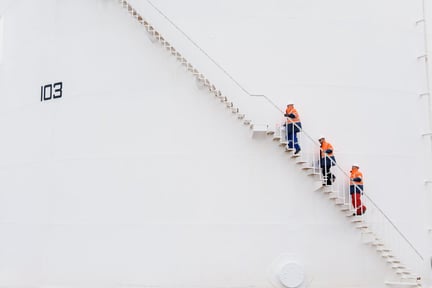"The facility certification from LRQA will help provide awareness and assurance for customers," says AML's Managing Director, Andy Sales.
Adelaide, Australia – LRQA has awarded its first additive manufacturing facility qualification certificate to a facility that focuses on wire-arc technology, AML Technologies (AML) in Australia.
AML is an additive manufacturing service bureau printing parts using wire-arc additive manufacturing (WAAM). WAAM differs from powder-based additive manufacturing in that it uses wire as feedstock.
LRQA's auditors carried out a full review of AML’s systems specific to the WAAM process, as well as a survey of the facility. The facility qualification includes a review of such areas as: material handling, personnel competence, build process control, health and safety, and control of non-conforming items.
AML approached LRQA for the certification based on LRQA's early adoption and role in creating additive manufacturing-specific certifications along with its partner organization in additive manufacturing, TWI.
Andy Sales, AML Techologies Managing Director, receives the LR-endorsed additive manufacturing facility qualification certificate from Hussain Quraishi, LRQA Strategic Projects Lead, at the LRQA Global Technology Centre in Singapore.
“Third-party inspection offers an un-biased advantage to potential customers wishing to build parts using AML’s process,” said Andy Sales, AML’s managing director. “That’s core to our values at AML. At the end of the day, the facility certification from LRQA will help provide awareness and assurance for customers to use AML for their OEM part and component type approval and qualification needs.”
Previous facility certifications from LRQA focused on powder-based AM processes and systems. However, powder-based AM processes are typically limited by the size of components that can be produced and available materials.
“These limitations have delayed the adoption of powder-based AM systems for marine and offshore industries,” said Hussain Quraishi, Strategic Projects Lead at LRQA's Global Technology Centre in Singapore. “Using wire feedstock enables companies to produce larger component sizes with a wider selection of materials. Combined with the lower cost of wire feedstock, this unlocks significant potential for the marine and offshore industries in particular.”
LRQA performed the qualification using its “Guidance Notes for the Certification of Metallic Parts made by Additive Manufacturing,” a goal-based framework that brings independent certification to additively manufactured metal parts, material manufacturers, and facilities.
“From our humble beginnings, AML had set quality accreditation as a planned key milestone," said Sales. "Our early engagement with LRQA for facility qualification was a very smooth and efficient process. We gained valuable knowledge and appreciated the solid foundation of LRQA's highly experienced and enthusiastic surveyors and auditors. We are excited and look forward to working further with LRQA's as our business grows.”
LRQA and its parent organization, the LRQA Foundation, have been involved in AM projects, funding independent research and insight into AM processes since 2014. LRQA is also involved in several working groups for international AM standards. It also certified the first 3D printed component for the oil and gas industry in 2017.
Our engagement with LRQA for facility qualification was a smooth and efficient process. We are excited and look forward to working with LRQA as our business grows.



